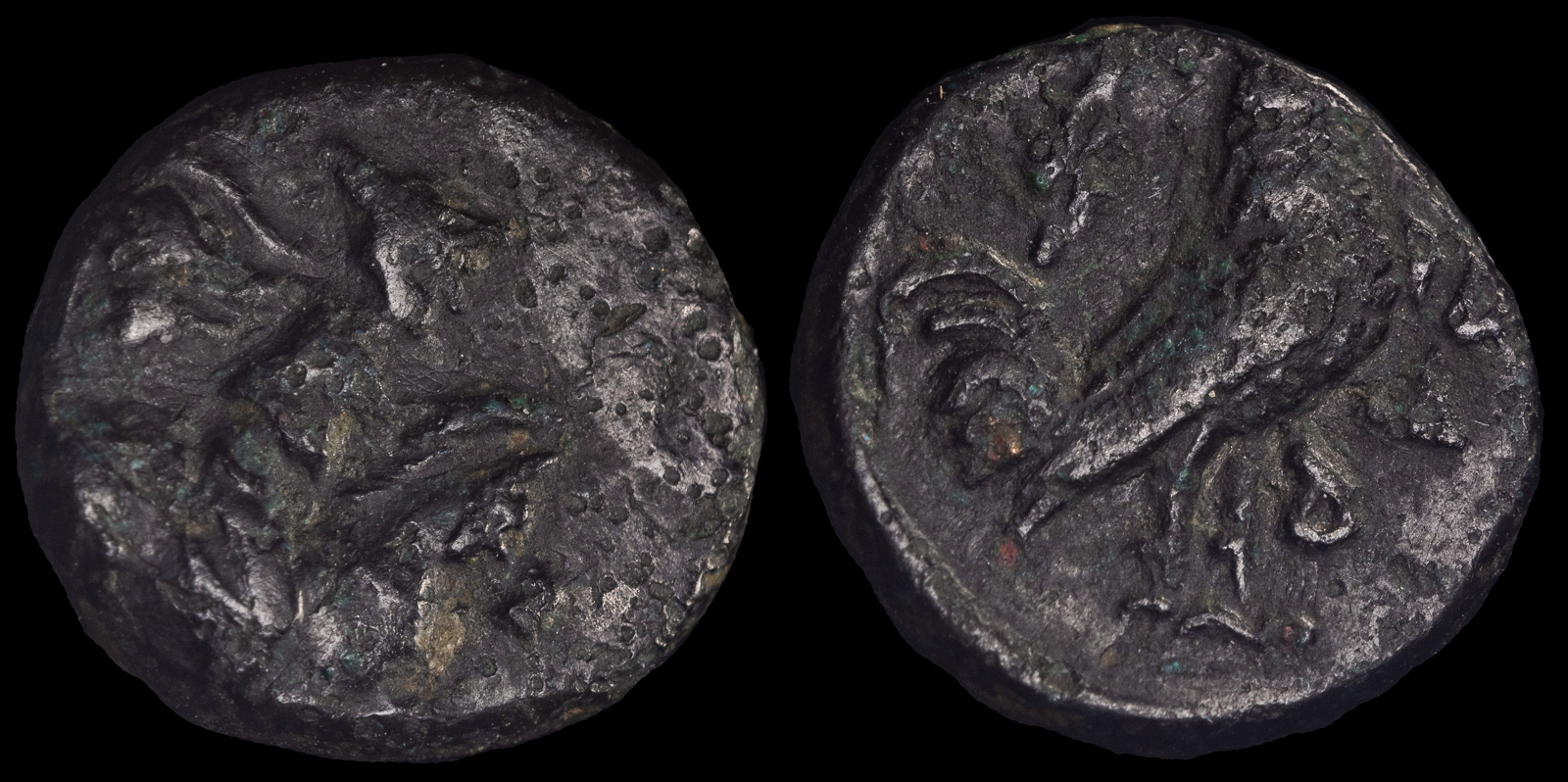Cock
View All Tags
One of the primary meanings of the cock on ancient Greek coinage was its association with vigilance and watchfulness. As a bird that heralds the dawn with its crowing, the cock symbolized the dispelling of darkness and the arrival of light. This metaphor extended to notions of alertness and readiness, qualities highly valued in both civic and military contexts. Coins featuring the cock could therefore serve as reminders of the importance of vigilance in safeguarding the city and its people.
The cock was also linked to bravery and martial prowess, particularly in its association with cockfighting, a popular pastime in ancient Greece. Cockfights were seen as demonstrations of courage and tenacity, and these qualities were often attributed to soldiers and warriors. Depictions of the cock on coins could evoke these martial virtues, celebrating the fighting spirit of a city-state or its leaders. In this sense, the cock became a symbol of valor and determination in the face of challenges.
In a religious context, the cock was connected to Apollo and Asclepius, the god of healing. The bird was often offered as a sacrifice to these deities, reflecting its role as a mediator between mortals and the divine. For example, Socrates’ famous last words, as recorded by Plato, included a request to offer a cock to Asclepius, signifying gratitude for the “cure” of life through death. Coins featuring the cock might thus carry connotations of piety and devotion, underscoring the community’s religious values and reverence for the gods.
Cities with significant ties to Apollo or Asclepius, such as Delphi or Epidaurus, occasionally used the cock in their coinage to emphasize these divine connections. In such cases, the bird functioned as a marker of the city’s sacred identity and its role as a center of worship. Additionally, the cock’s association with the renewal of life, linked to its morning crowing, made it a fitting symbol in contexts celebrating rebirth or healing.

Troas. Dardanos
circa 300-200 BCE
Æ 11mm, 1,08g
Obv: Horseman galloping right, wearing petasos.
Rev: ΔΑΡ. Cock standing left.

Dardanos, Troas
4th-3rd century BCE
Ae 11mm 1.1g
Obv: Horseman riding right wearing petasos
Rev: DAP; Rooster standing right, race torch behind
SNG Cop. 290